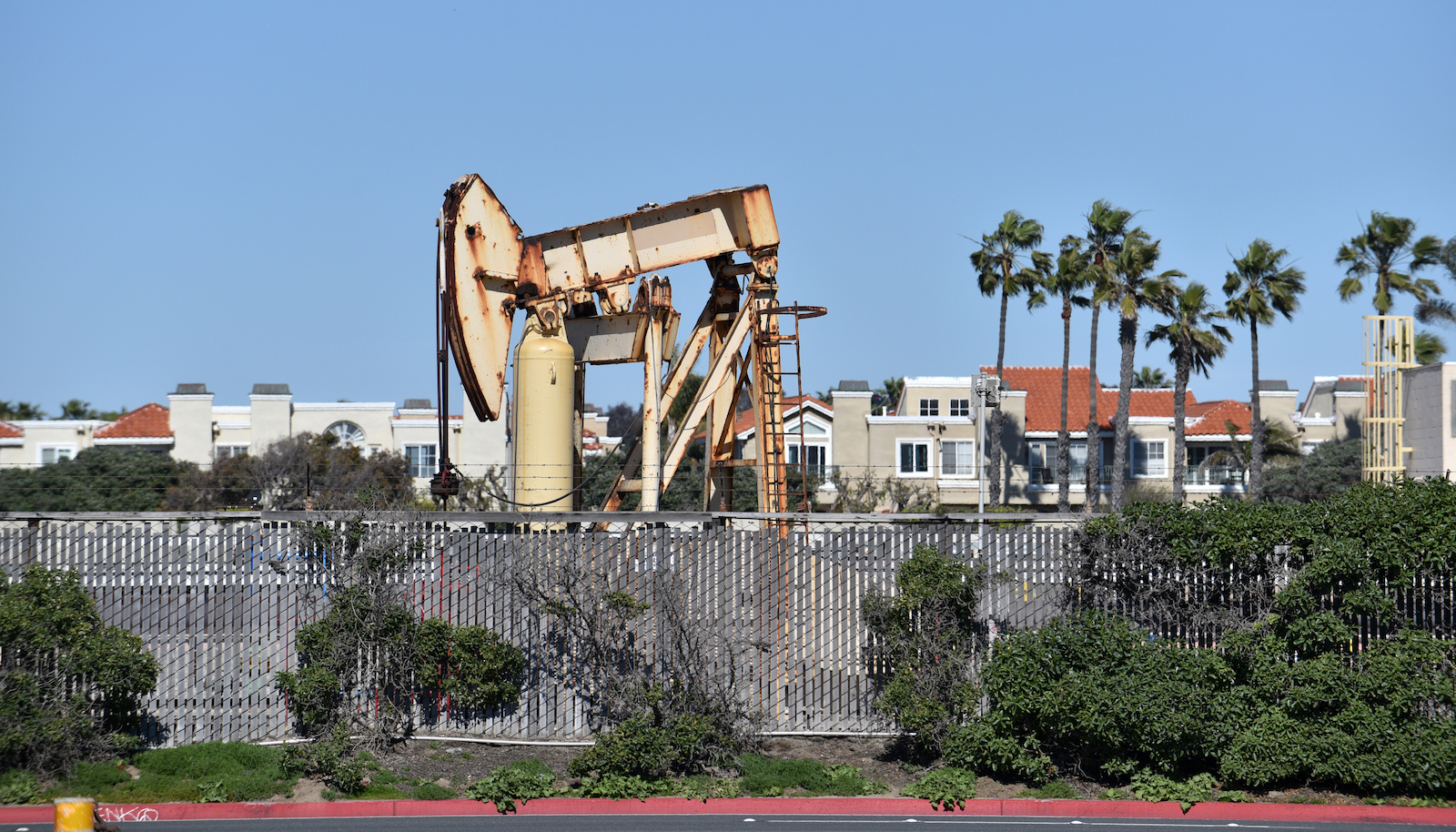After decades of fighting to end neighborhood oil drilling in California, environmental justice communities and their allies celebrated Wednesday as the state passed a bill phasing out oil and gas wells in close proximity to homes and schools.
The change was part of a sweeping package of climate bills passed by the California state legislature last night. It includes laws to codify climate neutrality goals, set rules for carbon capture, set interim targets for 100 percent clean energy by 2045, and extend the life of Diablo Canyon, a controversial nuclear power plant that has become a centerpoint of debate in the state’s energy transition. The action comes just one week after California finalized its plan to stop gas-engine car sales by 2035.
“The setback bill was our priority,” said Raquel Mason, policy manager with the California Environmental Justice Alliance. “It’s not often in my time doing this work that we get to go back to our community members with a full win.”
California is littered with 240,000 oil and gas wells and, until now, has had no statewide regulation on how close to homes, schools, and hospitals they can operate. The 2.7 million Californians who live within a half mile of the wells are at higher risk of cancer, asthma, heart disease, and adverse reproductive issues. An investigation by Grist and Capital & Main last year showed that Black, Latino, low-income, and medically underserved communities are disproportionately located near these wells in the state.
“With this bill, the government listened to community concerns and applied the setback to new wells and to the rework of wells,” said Ann Alexander, an advocate and lawyer with the Natural Resources Defense Council. Now, when neighborhood wells have to obtain rework permits, which they do every few years, they will be denied, progressively phasing them out.
As of last night, the Golden State also has a new long-term goal to decarbonize its entire economy. California’s previous legally binding emissions goals ended with a target of reducing greenhouse gas emissions by 40 percent by 2030 — a timeline it is not on track to achieve. Now, the state must get to net-zero emissions by 2045.
Net-zero means cutting emissions by some amount, and balancing out any remaining greenhouse gases with actions to suck carbon out of the atmosphere. The bill that California passed requires emission reductions of at least 85 percent.
Lawmakers also passed two bills that dictate how California can achieve this. The first carbon neutrality-related legislation sets down guardrails for developing technologies that capture carbon dioxide from the smokestacks of industrial facilities, as well as “direct air capture” plants that would suck carbon from the atmosphere. The Air Resources Board, a state agency that regulates greenhouse gas emissions, will have to develop monitoring and reporting systems to ensure that these kinds of projects are actually reducing emissions, and create a public database for tracking their deployment. This bill also requires that the captured carbon cannot be injected into oil fields to increase oil production — a practice that is common today.
The second requires the state to establish new targets for enhancing carbon sinks on natural and working lands, like forests and wetlands. Notably, it separates these targets from the state’s carbon offset market, which enables major polluters in California, like refinery operators, to buy carbon credits from forestry projects to offset their emissions. The program has long been controversial, as it allows dirty industries to keep emitting and the integrity of the carbon credits has been called into question. The natural and working lands bill specifies that any projects receiving state funding for helping to achieve the new goals will not be allowed to generate carbon credits.
In the last hours of the legislative session Wednesday, as California entered a state of emergency heat wave, the vote on Diablo Canyon loomed. California’s last nuclear power plant, operated by Pacific Gas & Electric, or PG&E, the state’s largest private utility, supplies 10 percent of the state’s electricity and was slated to shut down both reactors by 2025.
For months, Governor Gavin Newsom has been laying the groundwork to keep the power plant open, based on concerns that cutting a major power supply at a time when the power grid is increasingly strained by heat waves might lead to blackouts.
Opponents of Diablo Canyon raised safety concerns as the aging facility has no permanent place to store nuclear waste and will require expensive updates when funding could instead be spent on renewable energy. The bill that passed last night will grant a $1.4 billion bailout loan to PG&E, extend the life of Diablo Canyon to at least 2030, and allow it to seek a renewed license until 2045.
Governor Newsom had asked legislators to develop and pass his climate agenda and the Diablo Canyon extension just a few weeks before the end of the legislative session. In the past, the state’s oil lobby and the building trade unions shut down initiatives similar to the ones proposed; this year saw some labor divisions, with individual unions representing electrical, utility, pipe trades, and sheet metal workers coming out in support of the package even while the building trades’ collective lobby stood against it. “They were handing out leaflets in the legislature focusing on aspects that they argue would create jobs,” Assemblymember Al Muratsuchi told Grist last week.
Except for one bill, all of the points in the package passed. A proposal that would have cut the state’s greenhouse gas emissions to 55 percent below 1990 levels, instead of 40 percent, by 2030 was voted down in the assembly. One reason could be because, at the moment, as reported in CalMatters, the state is not on track to reach its current target.




